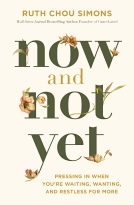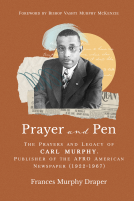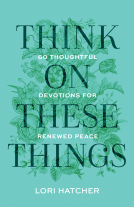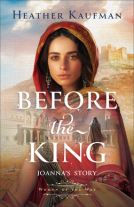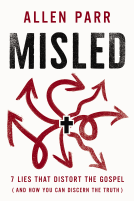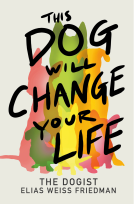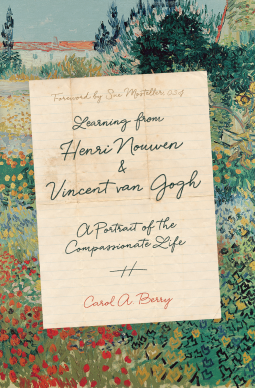
Learning from Henri Nouwen and Vincent van Gogh
A Portrait of the Compassionate Life
by Carol A. Berry
This title was previously available on NetGalley and is now archived.
Send NetGalley books directly to your Kindle or Kindle app
1
To read on a Kindle or Kindle app, please add kindle@netgalley.com as an approved email address to receive files in your Amazon account. Click here for step-by-step instructions.
2
Also find your Kindle email address within your Amazon account, and enter it here.
Pub Date May 07 2019 | Archive Date Jul 12 2019
InterVarsity Press | IVP Formatio
Talking about this book? Use #LearningFromHenriNouwenAndVincentVanGogh #NetGalley. More hashtag tips!
Description
Carol Berry and her husband met and befriended Henri Nouwen when she sat in his course on compassion at Yale Divinity School in the 1970s. At the request of Henri Nouwen's literary estate, she has written this book, which includes unpublished material recorded from Nouwen's lectures.As an art educator, Berry is uniquely situated to develop Nouwen's work on Vincent van Gogh and to add her own research. She fills in background on the much misunderstood spiritual context of van Gogh's work, and reinterprets van Gogh's art (presented here in full color) in light of Nouwen's lectures. Berry also brings in her own experience in ministry, sharing how Nouwen and van Gogh, each in his own way, led her to the richness and beauty of the compassionate life.
Advance Praise
"Carol Berry interweaves her own stories with Henri Nouwen's and with those of the artist who inspired them both, Vincent van Gogh. Her deep insights into struggle, solidarity with people, and the nature of creativity are powerful and universal. With careful research and thoughtful reflections, Berry clearly shows the reader the interconnections of their journeys and the threads of beauty they share. As an artist, Berry is able to share from her own sensitivity and insights into Vincent's art making. The printed artworks within allow the reader to reflect on the narrative. I loved this beautiful, deeply felt book."
-John August Swanson, artist and printmaker
"Carol Berry's deep knowledge of Vincent van Gogh, facilitated early on by her friendship with Henri Nouwen, helps us better connect our own suffering and the suffering of others to a more compassionate way of life. Carol invites us to move into the realm of mystery and grace as she underscores the humility and humanity of both men whose ultimate concern was to live practically and lovingly using Jesus as their guide and model. Carol Berry weaves together the lives of these two great Dutch spiritual masters and then offers wonder filled personal experiences of compassion. For Carol, Henri and Vincent are two wounded healers of the world. They are true brothers able in their own unique but powerfully connected way to heal so many—even now. Carol Berry's book is an inspiration."
-Richard Rohr, Center for Action and Contemplation
"Henri Nouwen and Vincent van Gogh are two of my favorite people. Their word and art inspire me daily, pointing me back to our beloved God, the glories of creation, swirling night skies and wheat fields, and sisters and brothers of every walk. Carol Berry unpacks their lessons and like Henri and Vincent offers the most beautiful gift—a sense of hope. Just what we need."
-John Dear, author of The Questions of Jesus and The Nonviolent Life
"From the faithful and artistic genius of Vincent van Gogh to the passionate and insightful teachings of Henri Nouwen this light-filled book is a must-read for everyone. A personal glimpse into the author's shining examples of living the compassionate life, gives intimate and amazing insight into loving our neighbors as ourselves. A colorful and brilliant work about love and genuine concern that bring van Gogh and Nouwen to life as servant leaders to humanity."
-Jane A. LoBrutto, licensed minister and administrator
"Carol Berry, artist, storyteller, and theologian (my words not hers), invites us to journey into the transcendent intersecting worlds of Fr. Henri Nouwen and Vincent van Gogh by recreating the experience of the only seminar by Fr. Nouwen on 'The Compassion of Vincent van Gogh.' I believe Henri to be one of the most, if not the most, profound and approachable spiritual guides of the last century, and Vincent an equally similar guide through his art. Carol's work sheds light on lesser known aspects of Vincent's life and vocation and at the same time invites us to reflect on our own lives as Henri evoked the compassionate way moving from the solidarity of suffering to consolation and then to comfort. Carol is refreshingly honest in telling her experiences with both Henri and Vincent but in ways that invite the reader to look more deeply into their own experiences and 'see therein the presence of the divine.' This compelling work will appeal to a broad audience in many fields."
-Phillip N. Grigsby, executive director, Schenectady (NY) Community Ministries, former president and a founding member of Capital Region Theological Center
"In her recent book, Carol Berry has created a place where art meets life and a new compassionate life emerges. She learns from two artful men of great compassion, artist Vincent Van Gogh and theologian Henri Nouwen. It was what she learned in Nouwen's course on van Gogh at Yale Divinity School and Carol's own subsequent research about the artist, that eventually spilled over into her own life experiences and give her a new lens of compassion through which to filter all of it. The vignettes she relates from her own life as an artist and from her ministry, witness to a life that is met on its own terms. She doesn't try to manipulate the details. She enters the life that is given to her at any moment and is transformed by it. Some may use the word serendipitous to describe the interweaving of the events of her and her husband's lives, she may call it providence."
-Jo-Ann Iannotti, photographer, poet, and author of Remember, Return, Rejoice: Journeying from Ash Wednesday to Easter Sunday
"From the moment I first discovered that Henri Nouwen taught a course at Yale Divinity School on the life and work of Vincent van Gogh, I searched for his class notes only to be disappointed to discover that they were never published—until now. Carol Berry has written the book I longed to find, weaving Nouwen's enduring wisdom with van Gogh's singular gift of using art to comfort and console. Nouwen and van Gogh—both wounded healers—invite us to a life of compassion, humility, and sacrificial love. With deep insight and sensitivity, Berry creates space for us to connect our stories with theirs and to discover what is worth seeing: the radiant beauty of hope within suffering and Christ's call for us to lay down our lives for others. This book is a timely and noteworthy gift."
-Sharon Garlough Brown, author of the Sensible Shoes series and Shades of Light
Available Editions
| EDITION | Other Format |
| ISBN | 9780830846511 |
| PRICE | $26.99 (USD) |
| PAGES | 160 |
Featured Reviews
 KIM H, Reviewer
KIM H, Reviewer
What we've been exposed to by Hollywood and the like about Vincent van Gogh has at best been a misunderstood life with much of his foundation as a person and artist omitted. An examination fostered by Henri Nouwen through his research, 900 letters and the chronological study of Vincent's art displays a much different portrait of the artist. Author Carol Berry takes us on a journey of that foundation, his writing and art to understand his choices, life, art and purpose.
What we learn of Vincent van Gogh, his deep compassion for people and sincere offerings of hope through his paintings is well worth the investment in this book. He truly emodied the title of wounded healer.
I received a complimentary copy of the book without obligation. This review is my opinion.
 Becky G, Reviewer
Becky G, Reviewer
Carol A Berry has chosen a favorite author and a favorite artist to find edification for spiritual life. She pulls similarities in the lives of Henri Nouwen and Vincent Van Gogh and adds in their spiritual growth to make a wonderful book to teach us new lessons that are as old as the Bible. I have long since loved Henri's writings. His writings seem to bring out new ideas I've never encountered before. Carol also includes the studies Henri did on the life of Vincent Van Gogh through his letters. Carol studied under Henri while he was at Yale and she was the one chosen to put his unpublished notes together in a book by his estate.
Her writing style gives these men an aura of heaven while showing their absolute humanity. She shows their hearts for God and how their thoughts and letters shaped their lives and can shape ours.
I give this book five stars, two thumbs up, and a starry, starry night.
My thanks to InterVarsity Press for allowing me to read and review this book.
 Michelle K, Reviewer
Michelle K, Reviewer
Learning from Henri Nouwen and Vincent van Gogh
A Portrait of the Compassionate Life
by Carol A. Berry
InterVarsity Press
IVP Books
Christian , Religion & Spirituality
Pub Date 07 May 2019
I am reviewing a copy of Learning from Henri Nouwen and Vincent van Gogh through InterVarsity Press and Netgalley:
Carol Berry and her husband had the privilege of meeting Henri Nouwen when she audited a course on Compassion at Yale Divinity School in the 1970's. She was given the request to write this book by Henri Nouwen's literary estate. Some unpublished material has been included in this book material including Nouwen's lecture as an art educator.
Berry is not only able to use Nouwen's work on Van-Gogh as well as her own research on the subject matter. She fills this book with some much misunderstood spiritual context of Van Gogh's art. Berry also adds her own experience in ministry to add to this richly detailed book!
If you are looking for a book that will go into the rich details of van Gogh's art and faith as well as Henri Nouwen's teaching on the artist then Learning from Henri Nouwen and Vincent Van Gogh is just the book for you!
Five out of five stars!
Happy Reading!
 Elizabeth E, Reviewer
Elizabeth E, Reviewer
I didn’t expect to love this book. Little did I know it was exactly what I needed.
Divided into three parts (Solidarity, Consolation and Comfort), this book explores Vincent van Gogh’s life and spirituality through the lens of Henri Nouwen and his teaching, as well as demonstrating how these ideals lived on in the life of Nouwen’s student, the author. It demonstrates the calling of the Christian life of compassion in universal, understandable ways and demonstrates the way this call is at once specific and universal, looking at once the same and completely different in the lives of the artist, the professor, and the ministers described in the book.
It was quite a revelation to read about Vincent’s life. I had quite a narrow understanding of him before this book: cut off ear, potentially a suicide, a little bit crazy, liked flowers. I’m almost ashamed of the caricature I had before: now I see a thoughtful man, who struggled to find the vocation which matched the depth of his spirit. Once he found that vocation, he flourished.
As an artist and a Christian, sometimes painting can feel an awful lot like praying. Often the two activities draw on the same energy. This book helped me better understand this connection and encouraged me to think more deeply about art and what I do with it, how I can pursue the call to compassion within my artistic journey.
I would encourage every thoughtful artist - whether Christian or not, whether a painter, writer or musician - to consider picking up this book. While the theology is specifically Christian, compassion is quite a universal virtue. It will help you think about your art better and live your life fuller than before.
 Educator 528984
Educator 528984
Learning from Henri Nouwen and Vincent van Gogh combines Nouwen's lectures from Yale with a brief study of the spirituality of van Gogh. This book helped me gain a greater appreciation of van Gogh's art, especially as rooted in his desire to focus on everyday people who were often impoverished. It is structured within the theory of how to provide compassion to others, based on Nouwen's thought and the life of van Gogh. Overall, this book provides an important introduction to van Gogh's spirituality, and the ideas it offered should be included when we study this great artist.
 janet k, Librarian
janet k, Librarian
Carol Berry takes readers on a definite journey. Through letters and obviously detailed research she brings the two men, Nouwen and van Gogh to life in a way I never expected. Ms Berry writes conversationally and I never felt lectured to. She draws spiritual and theological comparisons so vividly and clearly that I relished the time spent with these two men, artists in their own rights. I knew so little about either man at the beginning, but I cant stop telling people what I now know! I would recommend this book as a fantastic book discussion selection, based solely on how badly I wanted to connect to other readers.
Well Done, Carol Berry!
I received my copy through NetGalley under no obligation.
Learning from Henri Nouwen & Vincent Van Gogh A portrait of the
Compassionate Life by Carol A. Berry Foreword by Sue Masteller is a stellar, particular book to my point of view. Published by InterVarsity Press, this book speaks the language of compassion and a compassionate life seen of course through the eyes of the writer, the wife of a pastor, but also the one of mr Nouwen through the works by Vincent Van Gogh.
Mrs Berry attended a course in 1978 by mr. Nouwen where the teacher expressed all the magnificient message left by Vincent Van Gogh not just as a painter, but first of all as a sensitive, wonderful, touching, human being in grade to be compassionate, close to people, in the particular the last ones of the world, peasants, later miners.
Being Vincent Van Gogh's dad a pastor, peasants were a strong reality in the church he ruled and often, Vincent's father asked him of joining him during his visits. Years later Vincent wrote to his brother Theo: "Even as a boy I sometimes looked up with endless sympathy and respect into a half-withered female face where it was written,
as it were: life and reality have left its mark there."
People who forged his character and entered in his soul for remaining there forever.
The existence of Van Gogh as we all know has been difficult, unlucky, and being a sensitive person of course difficult for this reason as well. Although his father was a pastor, he didn't meet as also writes the author, a great compassion from his family. They would have wanted to see more real consistency in what he was doing, but the decision of dedicating his years to an art's life meant most of the times lack of money.
Theo, in particular, his brother will always remain close to him.
But what does the word compassion mean? To suffer with. Being compassionate is sharing with other a common destiny, being close, comforting and understanding.
As adds the author Saint Paul wrote ones: "Always consider the other
person to be better than yourself, so nobody thinks of his own interests
first but everyone thinks of the other people’s interests instead."
When Van Gogh left his house he began a trip that brought him at the Hague, Paris, London. Here he worked for an art dailer but this work didn't have success and after a while Vincent left London embracing the cause of the miners in the Borinage.
He did it with simplicity and, living his life to the fullest and protecting the rights of the miners who, at first saw this boy with great diffidence.
Consolation means cum solus with , so alone with and as adds Berry, it's not so simple to stay close to someone in the sufferance, because sometimes we stereotyped sufferance or just because we would want to fly away, without helping our relative or our friend in the sufferance. I experienced a lot of sufferances but I can tell you people evaporated where not strong enough for helping; but let's add this, it is human.
The new existence of Van Gogh was characterized by compassion in particular regarding the poorest people around him like a prostitute in trouble. There will be also a love-story but it ended up tragically because the girl, pressed by her family returned to be a prostitute, a profession that permitted her of earning a lot of money.
After this experience Van Gogh went to Drenthe. Continuing to potraying peasants.
and "feeling them" as wrote to Theo: "One must paint the peasants as being himself one of them, as feeling, thinking as they do themselves."
Ready for the biggest world, Van Gogh won't never return home once he again, left Holland.
Berry explains that: "Every human being does have a great, yet often unknown, gift to care, to be compassionate, to become present to the other, to listen, to hear, and to receive. If that gift would be set free and made available, miracles could take place."
Paris meant to Vincent and Theo a wonderful experience thanks to the vibrant parisienne life and the new knowledge he had about color theory.
What Van Gogh did from this moment was to research spasmodically for vibrant colors and that light in grade to make the difference. Bright colors were compulsively added for bringing joy in the darkest corners of people's existences.
When in Arles Van Gogh would have wanted to create a studio but the only one agreed was Paul Gaugin and as we all remember that friendship and sodalice brought Van Gogh at an ugly moment of auto-lesionism: for a reason or another he cut one of his ear with powerful consequences for his health; frequent seizures, a lot of headache. And depression. Gaugin terrorized escaped away when discovered what his friend caused to himself. Destination Paris.
More than a year spent at Saint-Rémy for recovering, Theo insisted: he had to live with him and his family.
It hasn't been another great success and at the end Van Gogh returned home one day with this apparently episode of suicide. He didn't die immediately: two days later, assisted by Theo.
It is still disputed this story because yes, maybe it was a suicide but maybe also a probable accidental shooting. We won't never know that and Theo didn't add anything in any letter, too devastated for the departure of his creative brother.
I have been touched by a sermon of Steve, the husband of mrs Berry. I knew a person like Lyn, someone who loved to share, making happy and joyful other people.
I add some of the sermon.
"Lyn didn’t have any money because he put people before money.
He valued friendships more than he valued things. He gave every-
thing he had, wherever he was. Men and women are generally
valued by what they acquire. It’s one of the big lies, of course, that
we are what we own. Lyn measured life and its value by a higher
standard. Material wealth came in far, far behind an extensive list
of priorities, topped by helping others. That’s what he did. He left
behind a legacy of people he had helped and nurtured. You never
had to ask Lyn to help with anything; he was always one step
ahead of the asking. He always offered; he never sat by and ex-
pected someone else to do what he could do or to help where he
might help. Lyn did not grasp for things. He did not measure his
life over and against others....Lyn taught us how to trust. He taught us that you could have your heart broken and still go on loving. He taught us that sacrifice for the
ones you love is never too great.
The book is divided in three parts: Solidarity, Consolation and Comfort with a lot of paintings of Van Gogh's production. A real joy for the eyes.
I thank NetGalley and InterVarsity Press for this ebook.
 Reviewer 451191
Reviewer 451191
The heart of this book is embodied by Henri Nouwen's words; "the word compassion literally means 'to suffer with'". Because it's essentially about the experiences of three people (Vincent Van Gogh, Nouwen, and the author Carol Berry) who suffered greatly to be compassionate but also found no other way of living.
Naturally the most famous of the three is Van Gogh but his life takes on an entirely new light through the lens of Dutch theologian and professor Henri Nouwen. And Nouwen's life and teachings in turn are transformed by the impressions of his former student, the art educator Carol Berry who took Nouwen's class on compassion at Yale. Nouwen calls Van Gogh 'his saint', in that he found a spirit so kindred to his own, so continuously inspirational, that he spent decades of his life studying Van Gogh, his letters, and his art. And on the surface this confused me because, although I was unfamiliar with Nouwen before reading this book, the facts of his life didn't seem kindred to my impression of Van Gogh as a sensitive, depressive genius who eventually committed suicide. After all what does a Dutch priest who gave up academia to live and work in a hospice for mentally disabled individuals have in common with an artist who lived with a prostitute and chopped his own ear off in a fit a rage?
Only, now I totally get it. Because they both lived this insane, radical compassion that looked foolish to the world and what we are told we should desire for our lives. In fact, Van Gogh spent his mid 20s as a missionary to a desperately poor and disease stricken mining community in Belgium. It was a formative time in his life and eventual artistic development. He wrote to his brother, "melancholy does not hurt, but makes us see things with a holier eye." And despite his own degenerating physical and emotional condition, he lived and worked in the same squalid conditions as the miners in order to live their suffering with them, instead of preaching from a lofty position. He ripped up his own bed sheets to make bandages for a wounded miner, he gave his meager food supplies to families with empty cupboards, etc. To the extent that when the Belgian religious authorities visited him to assess whether to appoint and financially support him as a full fledged missionary, he was rejected as too radical. It rather puts into sharp relief the distinction between religion and faith.
In much of Van Gogh's early work we can see his sketches of the miners, his desire to use art to foster compassion and empathy with oft ignored laborers and peasants. And something in this struck an eternal chord with Nouwen; the deepening of his own pain and grief to paint people who were ignored and scorned, at the cost of personal comfort and well being
Nouwen believed that Van Gogh 'crawled under the skin of people', found holy in the ordinary. Van Gogh himself chased the sun for his paintings later in life, giving us the most enduring image of his work, which is light soaked, warm, and reverent of nature and ordinary working people. Solidarity. Consolation. The belief that no person is 'destined for the worms'.
Nouwen, and later Berry, found in Van Gogh 'the light and the sun that were really bringing [one] in touch with something that could only be called the lighting up of eternity in the midst of life'. And that's the perfect way to sum it all up.
It was divine providence that Carol Berry wrote a book on two of my favorite people in art and literature. As an Art and Bible School graduate this book was like water in the desertion me. I taught art history yet was touched to read Henri Nouwen’s insights. I’ve been blessed by Nouwen’s writings for decades. The term “wounded healer” has been so beautifully exemplified by both Van Gogh and Nouwen. I’m grateful that Ms. Berry has shared her personal experience and transcribed for us such an edifying book. I will be purchasing a hard copy.
I received a free copy of this book in lieu of an honest review.
Honestly, I’m going to need the group discount for the number of copies I want to share with my family and friends whom I know will find the same beauty in ALL the areas of life upon in this book. I will never look at Van Gogh the same again.
#LearningFromHenriNouwenandVincentVanGogh. #NetGalley
Readers who liked this book also liked:
Elias Weiss Friedman
Biographies & Memoirs, Home & Garden, Outdoors & Nature



